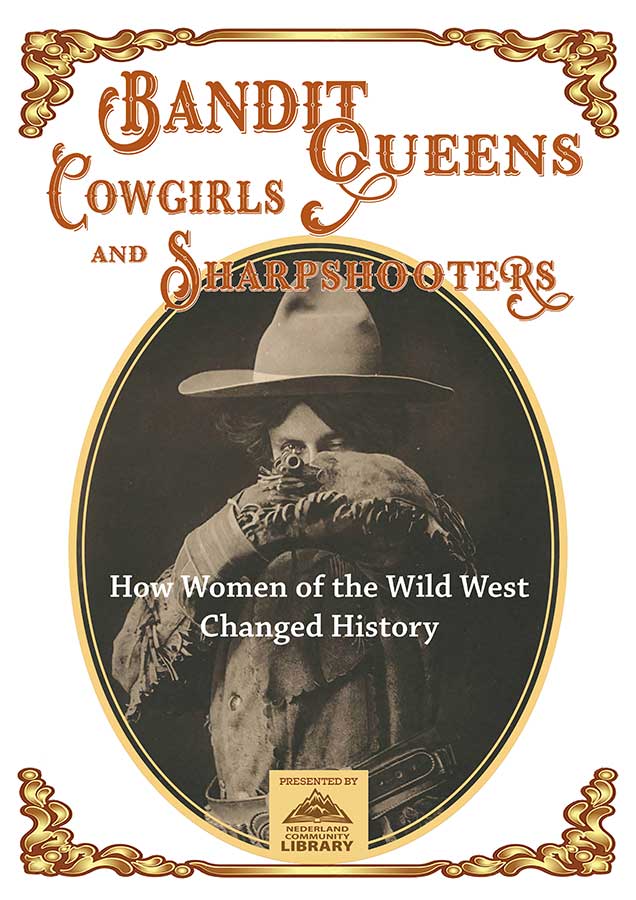
Bandit Queens, Cowgirls, and Sharpshooters: How Women of the Wild West Changed History
 Exhibit at the Library of Zeeland in Middelburg, The Netherlands, September 2025.
Exhibit at the Library of Zeeland in Middelburg, The Netherlands, September 2025.
Bandit Queens
Female Jesse James
Belle Starr
Born Myra MaiBelle Shirley in 1848, Belle Starr was classically educated to be a Southern belle. Her early years were characterized by the chaotic violence of the American Civil War, and after the death of her brother she swore revenge against all Yankees and worked as a spy for the Confederacy. She became a willing “friend to any brave and gallant outlaw” and after the war she was linked with several outlaw gangs. Her home on the Canadian River was considered a refuge for many famous outlaws of the time.
The crimes committed by Starr’s innermost circle―stagecoach stickups, bank robbery, horse theft―took her from war-torn Carthage to rollicking Scyene, Texas, until she finally settled in Indian Territory (present Oklahoma). And although she ran in the same circles as notorious outlaws Jesse James and the Younger brothers, the crimes ascribed to her were greatly embellished―Starr more than likely never killed a single person.
Belle Starr was shot in the back by an unknown assassin in 1889. Her life was sensationalized in dime novels as the “Bandit Queen” and later in Hollywood films.
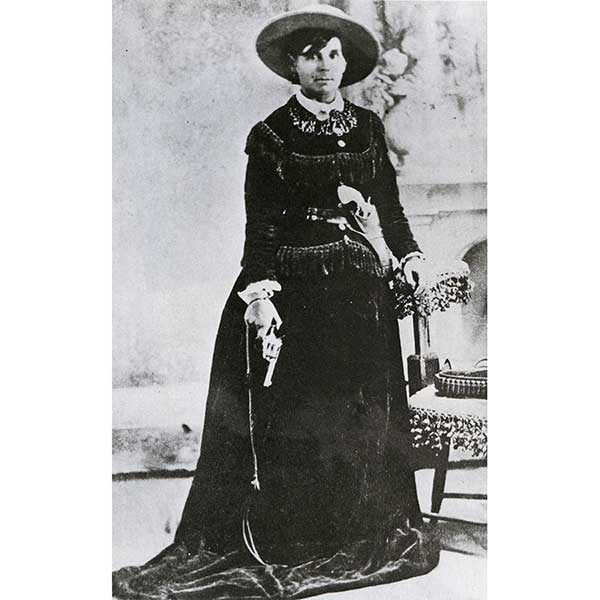
“She was a woman demonized for refusing to accept the genteel Victorian ideals expected of her, a woman who chose instead to live her life outside the law, riding sidesaddle with a pearl-handled Colt .45 strapped to her hip.”
–Michael Wallis, Belle Starr: The Truth Behind the Wild West Legend
“Never one to follow convention, Belle Starr was a true gangster, and she dressed the part, unabashedly stylish clad entirely in black velvet and flashing an elaborately plumed hat…
“She was a bandit queen who ruled over her own roost of outlaws, offering shelter and provision to some of the most dangerous men in the West.
“The very rights and privileges that nineteenth-century America denied her because of her sex, Belle Starr decided to acquire by the gun…She chose a path different from that which was expected of her—a route that shook with thunder, that was drenched in blood. An exceedingly dangerous road, albeit one upon which she took orders from no man.”
—Dane Huckelbridge, Queen of All Mayhem
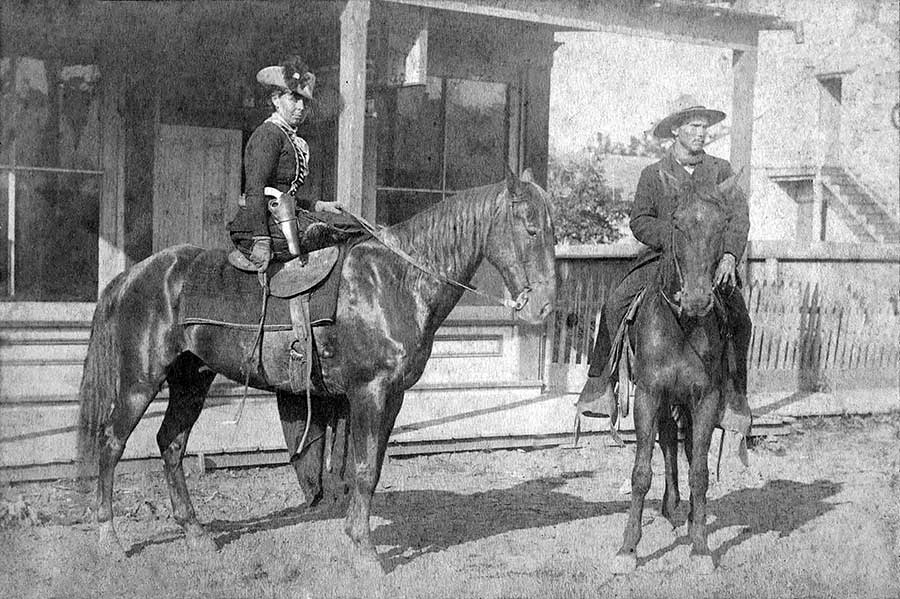
“Why did a woman who had considerable advantages in life—a good family, a decent education, solid marriage prospects, a clear path to financial security—choose to pursue a life of crime?
The life of Belle Starr is one of almost endless trauma: the horrors of the Civil War, which destroyed her hometown and killed her beloved brother, Bud; the untimely deaths of her first two husbands, both of them murdered; a stint in Detroit’s notorious women’s prison…
Her career coincided with those of Susan B. Anthony and Elizabeth Cady Stanton, and yet Belle Starr was a very different sort of feminist icon.”
–Dane Huckelbridge, Queen of All Mayhem
Queen of the Plains
Calamity Jane
(1852-1903)
Martha Jane Cannary was born on May 1, 1852, the eldest of six children. Her parents, Robert and Charlotte Cannary, were reportedly unsavoury figures involved in petty crime. The family was often financially destitute. When Calamity Jane’s parents died, she was forced to fend for herself. She wandered the Dakotas, Colorado, Montana, and Wyoming, consorting with miners, soldiers, and railroad workers, and accumulating numerous “husbands.”
She worked as a teamster and as an Army scout. She also ran a hurdy-gurdy house and a saloon, staked a few mining claims, and appeared twice on stage. She earned a reputation for helping the sick and the needy. Because of her hard drinking and rowdy behavior, Calamity Jane spent much of her life in and out of jail.
Her unladylike exploits first appeared in a dime novel in 1877. These sensationalized western stories with titles such as “Calamity Jane, Queen of the Plains” and “Calamity Jane, The Heroine of Whoop-Up” helped build her legend, and she wrote about her life in Life and Adventures, an exaggerated but popular account of her exploits.
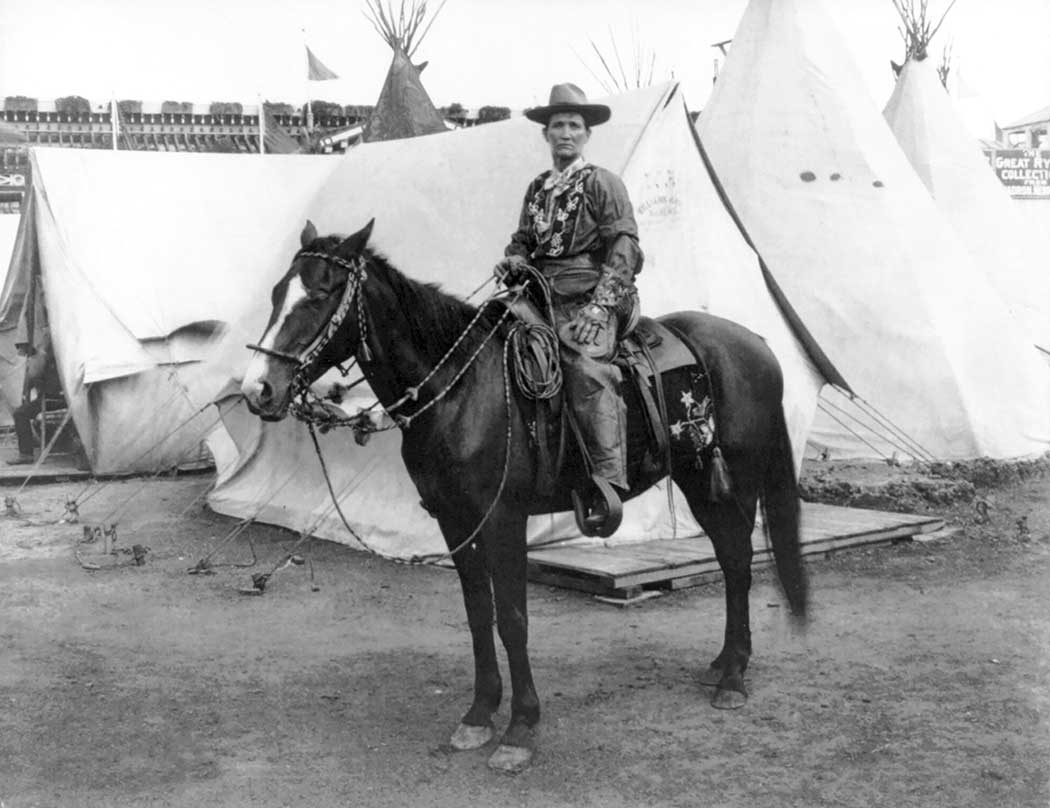
“She may or may not have been a Pony Express driver, nurse, cook and saloon girl; she was probably a sometime prostitute; she was certainly a scout and a famed performer in Buffalo Bill’s traveling show, struggled with alcoholism, and died in her early fifties. Oh, and she also nursed smallpox patients in Deadwood and took the reins of a runaway stagecoach after the driver was shot.”
–Sadie Stein, The Paris Review
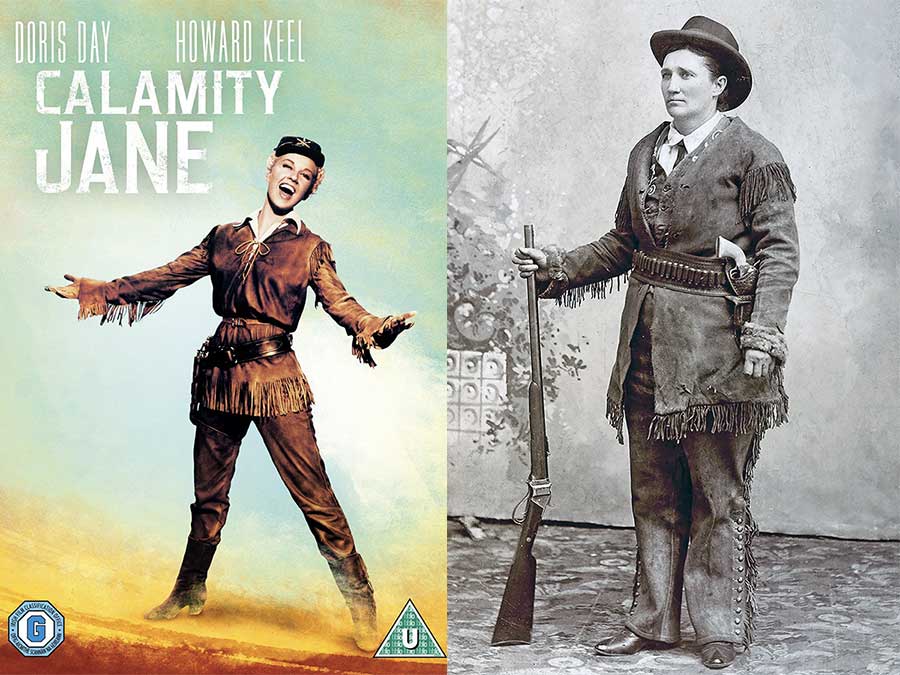
Jane had a reputation for impressive horsewomanship and shooting abilities. Her skills took her to Buffalo Bill’s Wild West Show in 1895 where she performed sharpshooting astride her horse. She toured Minneapolis, Chicago, St. Louis and Kansas City, and she was widely popular. However, she was frequently fired for drunkenness.
Her life was immortalized in film. In the Doris Day film Calamity Jane, the star wore an outfit much like the actual one worn by Calamity Jane in the 1880s.
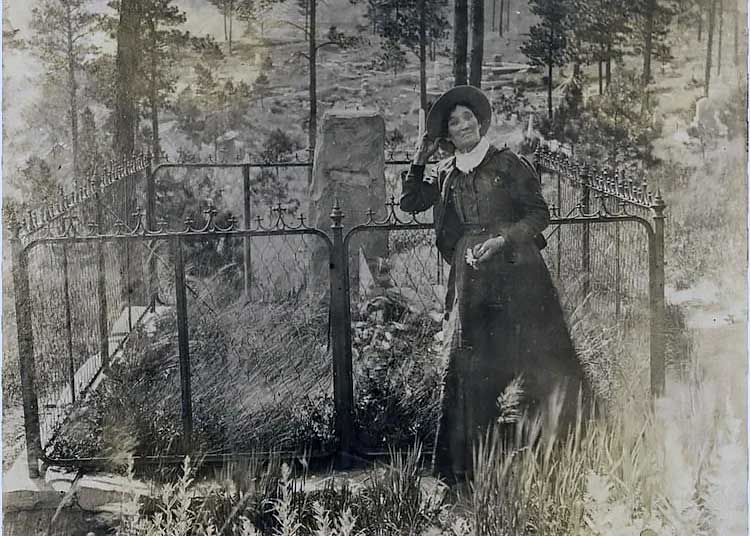
Calamity Jane at ‘Wild Bill’ Hickok’s gravesite in Deadwood, Dakota Territory, c. 1890s. (Wikimedia Commons)
Calamity Jane reportedly met Wild Bill Hickok in 1876 when they were traveling on the same wagon train to Deadwood, South Dakota. As elaborate exaggerators and heavy drinkers, the pair are said to have hit it off immediately. Reports from the time indicate that Jane claimed to love Hickok, but he did not return her affections.
She died in 1903, and her dying wish was to be buried next to Wild Bill Hickok. Her request was granted, and her funeral was the largest to be held in Deadwood for a woman. Touchingly, her coffin was closed by a man who, as a boy, she had nursed back to health when he suffered from smallpox as a child.
THE GIRL BANDIT
Pearl Hart
History was made when Pearl Hart, disguised as a man, held up a stagecoach in Arizona and robbed the passengers at gunpoint. A manhunt ensued as word of her heist spread, and Pearl Hart went on to become a media sensation and the most notorious female outlaw on the Western frontier.
Pearl Hart was born Lillie Naomi Davy on April 19, 1871, in Ontario, Canada. She married at a young age and moved with her husband to Chicago. After she left her no-good husband, she traveled around the West and supported herself by working various jobs.
On May 30, 1899, Pearl Hart disguised herself as a man, wearing a rough miner’s shirt and blue overalls, and held up a stagecoach in Arizona with her friend Joe Boot. They stole $290 from a drummer, $36 from another male passenger, and $100 from a Chinese merchant.
Following a manhunt across the desert, Hart and Boot were caught. Hart insisted that the court had no right to place her on trial, saying: “I shall not consent to be tried under a law in which my sex had no voice in the making.” She admitted that she had robbed the stage because she needed money for her ailing mother. The story made headlines across the country, and newspapers dubbed her the “Girl Bandit.” After she was acquitted, the disgruntled judge tried her again for robbery and sentenced her to five years at the territorial prison in Yuma, Arizona, where she entertained curious visitors and wrote poetry.
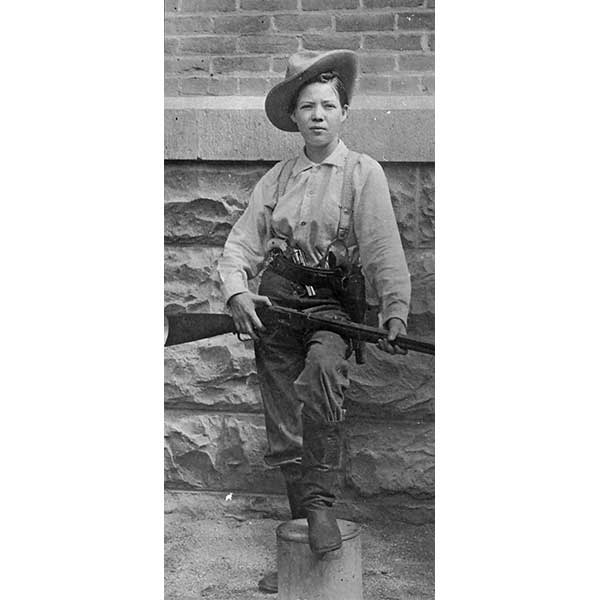
“Hailed by many as ‘The Bandit Queen,’ her epic life of crime and legacy as a female trailblazer provide a crucial lens into the lives of the rare women who made their mark in the American West.”
–John Beoessenecker, Wildcat: The Untold Story of Pearl Hart, the Wild West’s Most Notorious Woman Bandit
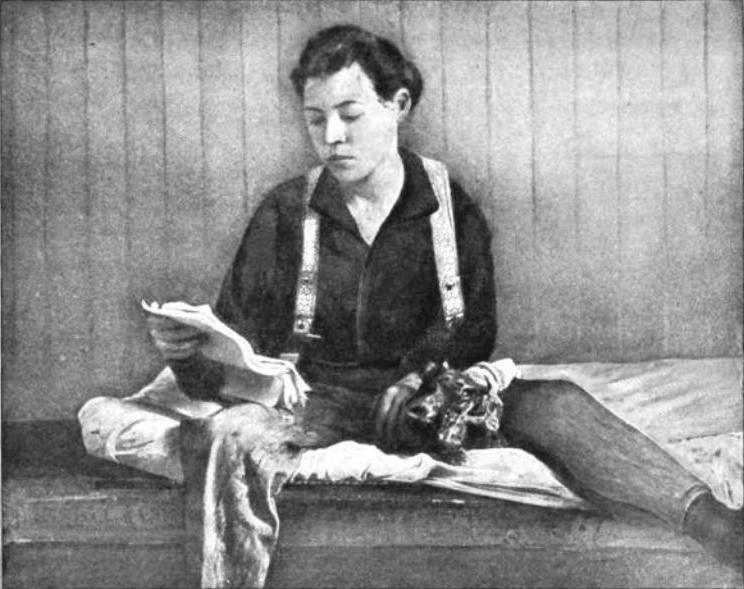
Pearl Hart in her jail cell: “The woman is receiving much attention, an afternoon rarely going by without her having lots of callers and herself being photographed. The camera fiends have taken shots of her with all sorts of firearms and looking as much the desperado as they can make her.”
— Silver Belt newspaper, Globe, Arizona
“The vast majority of women in the nineteenth century did not have sexual relations outside of marriage. They did not smoke, and they certainly did not use opium and morphine. They did not wear men’s clothing, ride astraddle, or carry six-shooters. Pearl Hart broke all these taboos and then some. She swore, smoked, drank, robbed, rode hard, broke jail, and used men with abandon. The Old West never saw another woman like her.”
“Pearl Hart was a woman far ahead of her time. She was self-reliant, adventurous, unconstrained by convention, and sexually liberated. Those attributes were extremely rare for a woman in the nineteenth century.”
–John Beoessenecker, Wildcat: The Untold Story of Pearl Hart, the Wild West’s Most Notorious Woman Bandit
“Female outlaws out West were not considered cowgirls, but their rowdy behavior and disreputability contributed to the conception of the cowgirl as an undisciplined character. Dime novelists, journalists, sensationalists, and Hollywood writers seized the opportunity to glamorize notorious outlaws like Belle Starr, Calamity Jane, and Pearl Hart. Audiences worldwide devoured exaggerated tales of these lawless women and their felonious exploits. For the most part, western afficionados found these outlaw spirits endearing; their names became household words.
“Their exploits helped promote the idea that the West was not just a man’s world and that there were female characters equally as wild and woolly as the men.”
– Elizabeth Clair Flood, Cowgirls, Women of the Wild West
SEE MORE FROM THE EXHIBIT: Cowgirls >> Sharpshooters>>
GOLDIE!
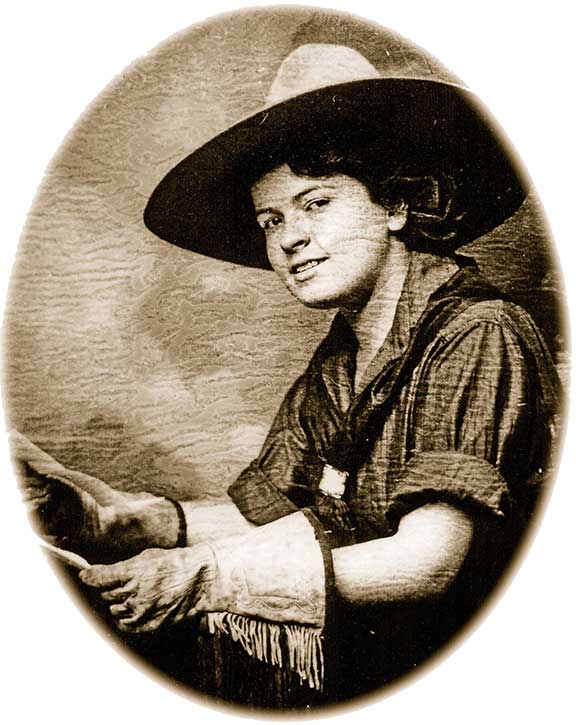 Read about Goldie Griffith
Read about Goldie Griffith
JOIN ME
every other week
on Cowgirl Cocktail
for more Wild West history

